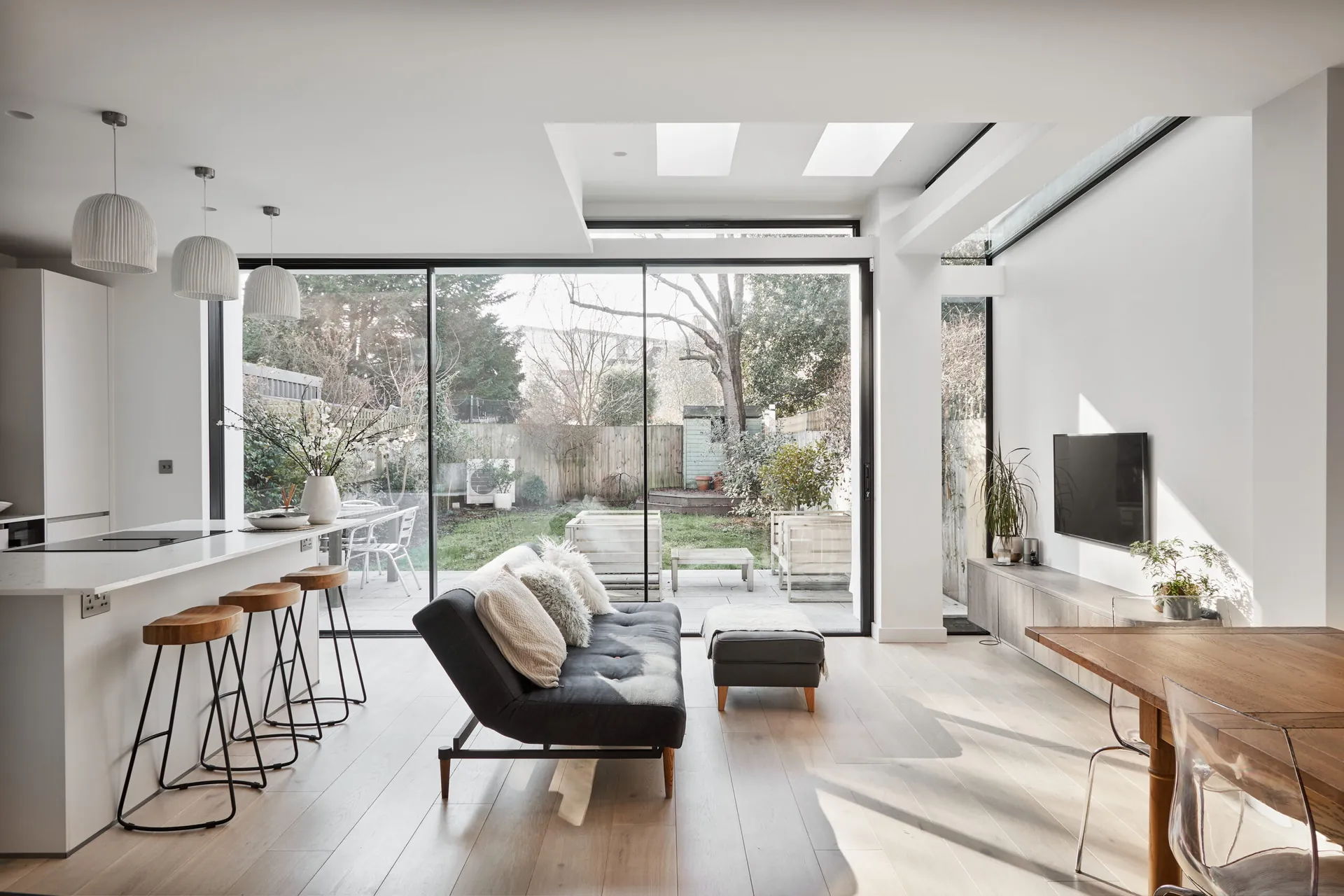The Best Indoor Plants for Your Home | Real Estate
When it’s time to list a home for sale, there’s a common trope of the real estate agent bringing in fresh-cut flowers for the photoshoot or the first open house. Flowers add a pop of color and a hint of nature to any home, of course, but the right houseplant in the right room can add a lot to everyday life.
Some people are born with a green thumb while others have a knack for killing any plant they attempt to cultivate, but there are plenty of plants that don’t require a ton of care when properly selected. And while certain plants are easier to care for than others, some houseplants also work better in certain rooms. Different plants will thrive when exposed to light while others won’t.
With this in mind, here are some room-by-room ideas for houseplants, depending on factors like natural sunlight, environmental benefits, and necessary care.
Living Room
A great-looking plant can provide some much-needed visual drama, and there’s no better place for this than a living room. “Depending on the look we are going for, larger-scale plants with an architectural feel like a rubber plant, fiddle-leaf fig tree, or monstera can bring the right amount of drama to a living room, as well as soften corners in the room,” says interior designer Maureen Cohen, principal at Makawe Interiors, based in Brooklyn, New York, and the Berkshires in Massachusetts.
Although fiddle-leaf fig trees are beautiful, they can be finicky. “They’re really incredible, but they take some attention due to their photosensitivity,” Cohen says. “They have these large waxy leaves, but you have to wipe or dust the leaves now and then, so the plant can access the light it needs.”
Monstera plants, also known as the Swiss cheese plant, have beautifully palm-shaped leaves with cut-outs, but, Cohen says, “that tropical, playful look isn’t always right for certain spaces.”
“For a living room, I prefer a plant with some color, like a cyclamen,” says Nikola Simovski, a New York-based landscape architect and ornamental horticulturalist at RDH Design Group. “The cyclamen blooms in the fall, winter and spring, but then goes dormant during the summer. During the winter, in particular, there is naturally less green and color in the world, and this plant is in bloom when other plants aren’t. It requires direct light, so it’s best on a windowsill, but it’s pretty easy to take care of.” Heads up, though: The cyclamen can be toxic to pets.
Ideal indoor plants for your living room are:
- Rubber plant.
- Fiddle-leaf fig tree.
- Monstera plant.
- Cyclamen.
Foyer
Like the living room, many people want to create some drama with a “decor moment” in their home’s entryway, and a big, beautiful plant can do that.
Often, a foyer doesn’t have a window, unlike the living room. “Rubber plants thrive in dim light,” Cohen says. “They can grow really tall and the leaves have a beautiful shine to them. They tolerate neglect, so people with little experience won’t have too much trouble with this plant, Cohen says, and she adds that rubber plants are known to eliminate mold spores from the air, which adds an environmental benefit as well.
A reliable plant that doesn’t need a lot of light is a good choice for an entryway. “One of my favorite plants is a ZZ plant,” Simovski says. “It’s good for beginners, it can tolerate a low-light environment like a hallway or entryway, and you only need to water it about once a month.” ZZ plants can be toxic to pets too, though, so if you have a four-legged friend walking around, be careful.
Ideal indoor plants for your foyer are:
Kitchen
Depending on counter space and light, having fresh herbs growing in the kitchen is a natural choice. It’s convenient to grow hearty, edible plants like basil, oregano, thyme or rosemary since these are low maintenance year-round and can be used as cooking ingredients in food or garnishes in cocktails. There’s no better way to brighten the taste, smell and look of food than by using fresh herbs.
Ideal indoor plants for your kitchen are:
- Basil.
- Oregano.
- Thyme.
- Rosemary.
- Other fresh herbs.
Bedroom
Plants can look great in a bedroom, but having a natural air purifier is an added bonus, especially at night. “For bedroom plants, opt for ones that emit more oxygen at night, while you’re sleeping,” Cohen says. “That’s when the snake plant is doing its work.”
One of the most popular houseplants around is the sansevieria, commonly known as the snake plant and sometimes referred to as the “mother-in-law’s tongue” plant. Snake plants are easy to live with and great for beginners because the water requirements are low and these plants do well with moderate or indirect light.
Snake plants not only help to purify the air while you’re sleeping, but “they’re sleek and tall and linear, so they’re easy to place, even in small rooms,” Cohen says. “They require very little maintenance; they’re even easier to take care of than cacti. The variegated greens also add a nice pop of color if your bedroom is mostly monochromatic.”
Snake plants remove harmful chemicals from the air, like benzene and formaldehyde, which can come from furniture materials like synthetic fibers or particleboard, but they’re not the only plants with air-purifying properties. Others include spider plants, Gerbera daisies, pothos, aloe vera, and the peace lily, just to name a few.
“My favorite plant for the bedroom is the peace lily,” Simovski says. Not only is this a natural air purifier, but it’s thought to have anti-anxiety properties. “It’s a calming agent, and thus can promote more restful sleep – great for the bedroom.”
Ideal indoor plants for your bedroom are:
- Sansevieria, or snake plant.
- Spider plant.
- Gerbera daisy.
- Pothos.
- Aloe vera.
- Peace lily.
Kid’s Room
Plants with air-purifying and calming properties are obviously perfect for kids’ rooms too, and the tropical vine pothos not only delivers this, but it’s also low maintenance and a lot of fun. It doesn’t need a lot of water or sunlight and grows in a cascading style, which can look great on kids’ bookcases. It also comes in many shades of green.
In addition, “aloe vera is a great option for a child’s bedroom,” Cohen says. It can easily flourish on a sunny windowsill with minimal water. “It’s easy to maintain and kids love to play doctor if they pull off a piece and use the inside to apply to a ‘boo-boo.’ This also teaches kids to connect with the healing powers of nature,” Cohen says.
Ideal indoor plants for kids’ rooms are:
Office
We are spending more time than ever before in our home offices. Here, it’s ideal to have low-maintenance plants that also purify the air. The dracaena marginata ‘tricolor,’ also known as the rainbow plant, “doesn’t need a lot of light and doesn’t want to be overwatered,” Simovski says. “It also has the benefit of releasing more moisture in the air than many other plants due to its particular respiratory processes. It’s great for focus and advanced cognitive function, including concentration and memory.”
Another great plant for the office is the ZZ plant, since it needs so little attention.
Another option is the orchid, because of its simple and elegant architectural look. But orchids aren’t easy to care for, and beginners find it tough to get the light and water right to help them thrive.
Ideal indoor plants for your home office are:
- Dracaena marginata ‘tricolor,’ or rainbow plant.
- ZZ plant.
- Orchid.
Bathroom
For a more fragile plant, like an orchid, the bathroom may be the perfect environment. Craig Cuffney, a product developer for a consumer-packaged-goods company based in San Francisco, is a self-described “plant daddy,” estimating that he owns over 70 orchids.
“Orchids, in particular, are quite difficult and take a lot of specialized care, dependent on the variety and species,” Cuffney says. “It takes some work to get them to bloom, most only once a year if you’re lucky, but the reward is worth it.”
Simovski confirms: “Orchids require different levels of humidity and that isn’t always easy to control.” This is why many people find that their beautifully bloomed orchid ends up looking like a stick in a pot. Interestingly enough, many people have found that plants like orchids thrive in a bathroom.
“The number one way most people kill or hurt common house orchids (phalaenopsis orchids) is by overwatering them, which doesn’t give their roots time to dry and causes root rot,” Cuffney says. But the steam from the shower can be the perfect environment.
“If you have a window in the bathroom, I recommend frosting the window (to prevent direct exposure to sunlight) and putting an orchid on the windowsill,” Cohen says. “You don’t even need to water it because the humidity and steam will be enough for an orchid to survive and thrive, and go through its natural life cycle.”
An ideal indoor plant for your bathroom is:
Place Your Plants Wisely
There are so many plants to choose from, and any room can be vastly improved with the addition of the right plant. From form to function, the addition of a plant can bring health benefits as well as visual appeal to any space.
Cuffney’s recommendation: “Go to local plant stores and ask for recommendations that fit your room or apartment. If your home gets direct versus indirect sunlight, pick the right plants that will thrive in each particular environment. It’s also great to support local plant shops and nurseries.”







